1
The forerunner: The 96th "District of Algoma" Battalion of Rifles 1885 to 1896.1892
Thunder Bay Military Museum, Thunder Bay, Ontario, Canada
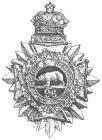 Credits:
Credits:Collection of David Ratz
2
The forerunner: The 96th "District of Algoma" Battalion of Rifles 1885 to 1896.3
The Beginning 1885Though there were moves a foot before 1885 to raise a Volunteer Corps in Northern Ontario, it was the Northwest Rebellion, whcih gave the government the needed motivation to authorize the formation of an Independent Company at Port Arthur. It is this date, 24 April 1885, when an Independent Company of Rifles, the Port Arthur Rifle Company was authorized under Captain Samuel Wellington Ray, that the LSSR traditionally traces its history. This date is appropriately referred to as the "Regimental Birthday."
5
Lieutenant Colonel S.W. Ray1892
Thunder Bay Military Museum, Thunder Bay, Ontario, Canada
 Credits:
Credits:Photo in the LSSR and Garrison Officer's Mess
6
Port Arthur Rifle Company1886
Thunder Bay Military Museum, Thunder Bay, Ontario, Canada
 Credits:
Credits:Collection of David Ratz
7
Changes in OrganizationThe Port Arthur Rifles formed the nucleus of the Provisional Battalion of Rifles in the District of Algoma authorized on 10 December 1886, under Ray who was promoted to Major to command the unit. At this time the District of Algoma encompassed the area from the north shore of Lake Huron to the Manitoba border. The new unit had four companies. It's Headquarters and No. 1 Company was located at Port Arthur, No. 2 Company at Fort William, No. 3 Company at Rat Portage and No 4 Company was divided into half companies at Gore Bay and Bruce Mines. The following April the unit was brought onto the permanent strength of the Active Militia and designated the 96th "District of Algoma" Battalion of Rifles. The two half companies were raised to full companies with No. 4 at Gore Bay and No. 5 at Bruce Mines. The headquarters of No. 5 Company, which had never really come into existence at Bruce Mines was moved to Little Current in September. It too failed to materialize and the company was relocated to Manitowaning on Manitoulin Island in October.
The unit grew again in May 1889 when the Sault Ste. Marie Half Company was enlarged and detached from the Sault Ste. Marie Half Battery (or demi-battery) of Mountain Artillery, to form No. 6 Company. At the same time the ineffectual company at Manitowaning was moved to Thessalon. In June 1892 the eastern boundary of Military District No. 10 was extended to the Nipigon River, dividing the unit between two areas. The companies at Gore Bay, Thessalon and the Sault consequently became Independent Companies.
8
The End of the Algoma Rifles30 July 2006
Thunder Bay Military Museum, Thunder Bay, Ontario, Canada

9
Officers of the 96th1892
Thunder Bay Military Museum, Thunder Bay, Ontario, Canada
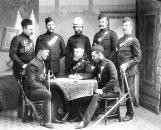 Credits:
Credits:Photo in the LSSR and Garrison Officer's Mess
10
NonCommissioned Officers of the Port Arthur Rifle Company1886
Thunder Bay Military Museum, Thunder Bay, Ontario, Canada
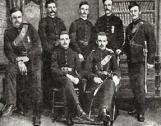 Credits:
Credits:Photo in the LSSR and Garrison Officer's Mess
11
96th Battalion Rifle Association1890
Thunder Bay Military Museum, Thunder Bay, Ontario, Canada
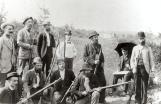 Credits:
Credits:Photo from National Archives of Canada
12
"No. 2 League Trophy" won by the Port Arthur Rifle Association1890
Thunder Bay Historical Museum Society, Thunder Bay, Ontario, Canada
 Credits:
Credits:Thunder Bay Historical Musuem Society Papers and Records Volume 10 1982
Collection of David Ratz
13
96th Battalion Rifle Team1890
Thunder Bay Military Museum, Thunder Bay, Ontario, Canada
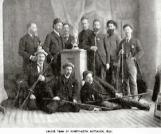 Credits:
Credits:The regimental history by G.F.G. Stanley, "In the Face of Danger"
14
Major T.H. Elliot the second Commanding Officer of the 96th Battalion1892
Thunder Bay Military Museum, Thunder Bay, Ontario, Canada
 Credits:
Credits:Collection of David Ratz